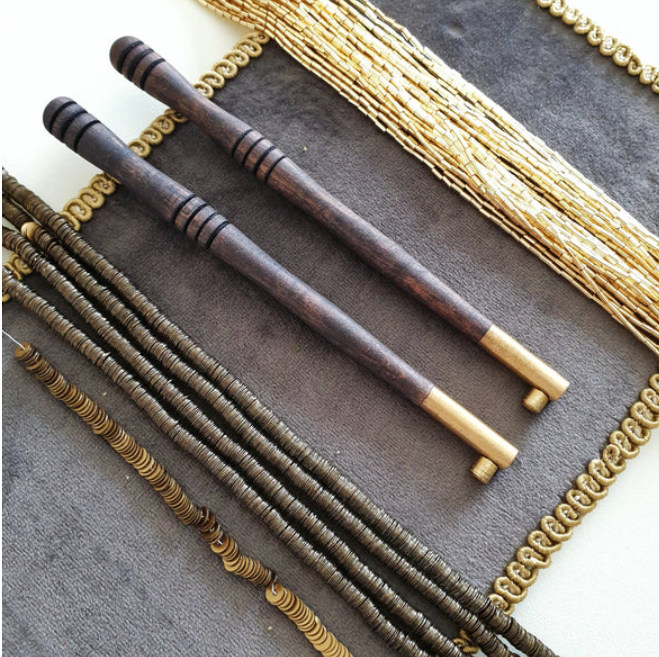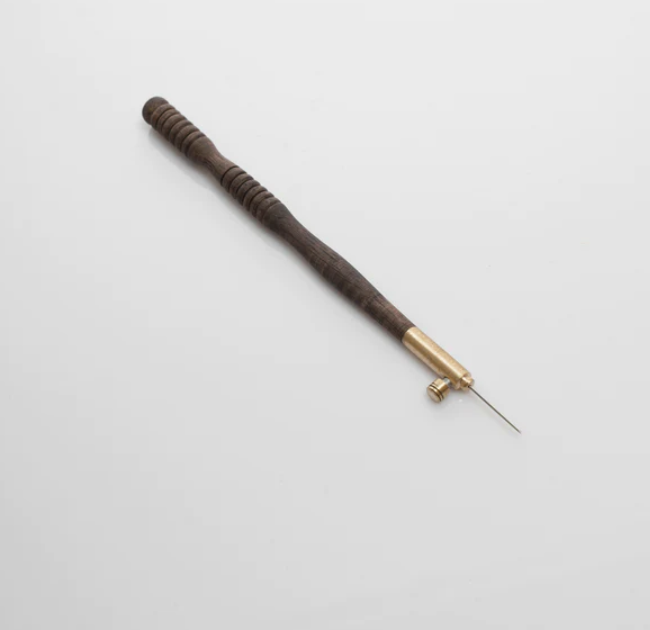Embroidery, a timeless craft, has evolved from a simple form of decoration to an intricate art form. Whether you’re a novice looking to start your journey or an experienced artist seeking to refine your skills, understanding the basics of embroidery thread types and their uses is crucial. This guide aims to shed light on the diverse world of embroidery threads, compare hand and machine embroidery accessories, and highlight the essential supplies needed to embark on your embroidery projects.

Visit our website to place an order https://embroideryhoop.shop/
Embroidery Thread Types and Their Significance in Crafting Beauty
Embroidery threads are the heart of any embroidery project. Their variety allows for a broad spectrum of creativity and application in both hand and machine embroidery. The two primary types of embroidery threads are:
- Rayon and Polyester Threads: Known for their high sheen and durability, these synthetic threads are a popular choice for machine embroidery. They come in a wide range of colors, offering flexibility and vibrancy to designs.
- Cotton Threads: Favored for hand embroidery, cotton threads provide a softer look with their matte finish. They’re available in various weights, which dictate the fineness or thickness of the embroidery.
Beyond these, specialty threads like silk, metallic, and variegated threads open up even more possibilities for creativity. Silk threads, with their unparalleled luster, add a touch of luxury to any piece. Metallic threads, though challenging to work with, can introduce a striking element to designs. Variegated threads, changing color along their length, create beautiful, multi-tonal effects.
Understanding the properties and best uses of each thread type can significantly impact the outcome of your embroidery projects. For instance, while rayon and polyester threads are ideal for durable, washable items like clothing, cotton threads suit delicate, decorative pieces.
Hand Embroidery vs. Machine Embroidery: Navigating the Accessories Landscape
The choice between hand and machine embroidery often comes down to the project’s nature, the desired outcome, and personal preference. Each method has its unique set of accessories, essential for bringing your embroidery to life.
Hand Embroidery Accessories:
- Needles: Various sizes and types, like crewel or tapestry, are chosen based on the fabric and thread type.
- Hoops and Frames: Used to keep the fabric taut while embroidering, ensuring even stitches.
- Scissors: Small, sharp scissors are crucial for cutting threads and trimming ends neatly.
Machine Embroidery Accessories:
- Stabilizers: These backings support the fabric during the embroidery process, preventing puckering and stretching.
- Embroidery Machines: From single-needle home machines to multi-needle professional setups, the choice of machine will dictate the project’s scale and complexity.
- Software: Machine embroidery often requires specialized software to create or modify designs before stitching.
The transition from hand embroidery to machine embroidery or vice versa can be seamless with the right accessories. Each offers a unique experience, with hand embroidery allowing for more organic, personalized creations and machine embroidery providing speed and precision for more complex, repeatable designs.
Essential Hand Embroidery Supplies for Starting Your Journey
Embarking on your hand embroidery journey requires assembling a basic toolkit. These essentials not only facilitate the learning process but also enhance the overall experience, allowing for exploration and growth within the craft. The core supplies include:
- Embroidery Needles: An assortment of sizes to accommodate different thread weights and fabric types.
- Embroidery Hoops: A basic hoop to keep your fabric stretched properly, ensuring even stitching.
- Scissors: A dedicated, sharp pair for snipping threads cleanly.
- Fabric: A good-quality, even-weave fabric like linen or cotton is ideal for beginners to practice on.
While these supplies form the foundation of your embroidery toolkit, exploring beyond these basics is where the real adventure begins. Experimenting with different thread types, such as the luxurious silk or the eye-catching metallic, can elevate your projects to new heights. Similarly, incorporating various accessories, like needle threaders or magnifying glasses, can enhance your efficiency and comfort during the embroidery process.

Selecting the Perfect Fabric for Your Embroidery Project
The choice of fabric is as crucial as the selection of threads, as it forms the foundation of your artwork. Different fabrics serve different purposes and lend themselves to various embroidery techniques:
- Linen: Renowned for its natural texture and durability, linen is a favorite for traditional and contemporary embroidery projects. Its even weave provides a reliable base for intricate stitches.
- Aida Cloth: Primarily used in cross-stitch projects, Aida cloth is characterized by its grid-like structure, making it easy for beginners to count and execute stitches.
- Canvas: Used in needlepoint and tapestry projects, canvas offers a sturdy base that can accommodate heavier threads and yarns.
When selecting fabric, consider the end use of your embroidered piece. Decorative items that won’t be washed often can be done on a wider variety of fabrics, while items like clothing or table linens require durable fabrics that can withstand regular laundering.
Advanced Embroidery Techniques to Explore
What is Tambour Embroidery?
Tambour Embroidery, often referred to as the “painting with beads” technique, is a beautiful and fast method of embroidery that uses a hook (similar to a crochet hook) to create a chain stitch on fabric stretched in a hoop. Originating from the French word ‘tambour’ meaning ‘drum’, this technique involves stretching the fabric tightly across a frame similar to a drum, providing a stable base for intricate work. It’s a versatile technique used for everything from delicate bridal veils to opulent haute couture garments.
Why Explore Tambour Embroidery?
- Speed and Efficiency: Once mastered, Tambour Embroidery allows for quicker stitching compared to traditional needle and thread methods.
- Versatility: It can be used to apply a wide range of embellishments, including beads, sequins, and more, making it ideal for luxurious and decorative pieces.
- Unique Texture and Look: The continuous chain stitch creates a distinctive look that is both elegant and durable.
Getting Started
- Tools: The basic tool required is a tambour hook, which comes in various sizes. You’ll also need a tambour frame or embroidery hoop to stretch your fabric tightly.
- Materials: Any fabric can be used, but lightweight fabrics like silk, muslin, or organza are traditionally preferred for their ability to handle delicate stitches and embellishments.
Techniques to Explore
- Chain Stitch Embroidery: The foundation of Tambour Embroidery, mastering the chain stitch, is crucial. It involves catching the thread from underneath the fabric and pulling it through to create a loop, which becomes a series of connected stitches.
- Bead and Sequin Embellishment: Once comfortable with the chain stitch, incorporating beads and sequins can elevate your work. This involves sliding the bead or sequin onto the hook before inserting it into the fabric, creating a secure and decorative effect.
- Combining Textures: Experiment with combining flat stitches with raised beads and sequins to create depth and texture. This can add a 3D effect to your work, making it stand out.
- Layering and Appliqué: Advanced Tambour Embroidery can involve layering different materials and using the tambour hook to apply delicate appliqués onto the fabric, offering endless creative possibilities.
Tips for Success
- Practice: Like any skill, proficiency in Tambour Embroidery comes with practice. Start with simple designs and gradually increase complexity.
- Patience and Precision: Working with delicate materials and small embellishments requires patience. Ensure each stitch and embellishment is placed precisely for the best results.
- Continuous Learning: Attend workshops, watch tutorials, and connect with other embroiderers to learn new tips and techniques.









